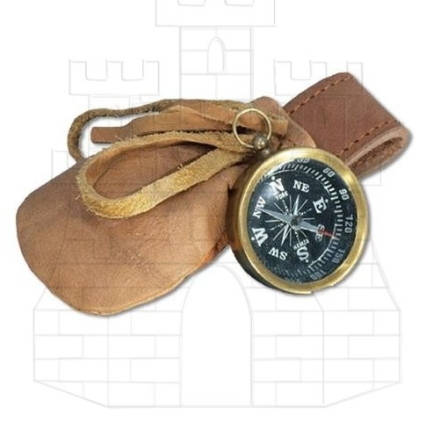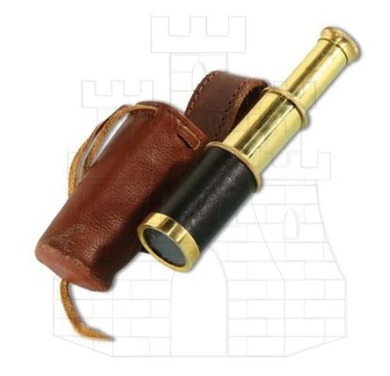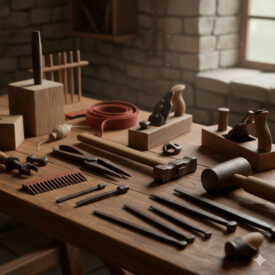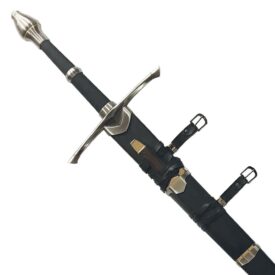In an increasingly digital world, where the maps on our phones guide us every step of the way, we sometimes forget the wisdom and reliability of classic tools. Among them, the compass stands as a timeless symbol of direction and autonomy. But what exactly is a compass, how does it work, and why is it still so important in the 21st century? Join us on this journey to discover the fascinating world of compasses, an instrument that has been fundamental throughout human history and that, even today, remains an indispensable companion for explorers, adventurers, and anyone who values self-sufficiency in navigation.
What Is a Compass and Why Is It Crucial in the Modern Era?
A compass is a fundamental instrument designed to help us orient ourselves by pointing to the Earth’s magnetic North. Thanks to its magnetized needle, which aligns with the Earth’s magnetic field, we can determine the cardinal directions (North, South, East, and West) and plot precise routes to our destination. This simple yet ingenious device has been the cornerstone of navigation for centuries, allowing explorers, sailors, and travelers to venture into the unknown with confidence.
The ability to orient oneself is a vital skill, not only for geographic navigation but also for enhancing autonomy, logical-spatial thinking, and problem-solving in various environments. In a world where technological dependence is ever-increasing, knowing how to use a compass gives us invaluable independence. While modern technology offers GPS and digital compasses integrated into our devices, these inherently depend on power and satellite or network signals. A traditional magnetic compass, on the other hand, works without any external power source, ensuring you are always ready to find your way, even in unexpected situations, emergencies, or remote places where there is no coverage. Its simplicity is its greatest strength, offering unwavering reliability when you need it most.
A Journey Through Time: The Fascinating History of the Compass
The history of the compass is as rich and deep as the oceans it helped conquer. Its origin dates back to ancient China, more than 2,000 years ago, a period of inventive fervor that also saw the birth of other significant advances. It is true that in the Middle Ages, great inventions were made such as the printing press, gunpowder, armor, the mechanical clock, the telescope, wind and water mills, blast furnaces for smelting and forging metal, musical instruments, Gothic cathedrals, stained glass windows, flying buttresses, ribbed vaults, the astrolabe and quadrant, and of course, the magnetic compass. Eyeglasses, glass mirrors, chess, universities, coffeehouses, and a constant evolution in weapons of war, such as projectile weapons, also emerged, among a long list of innovations that shaped the known world.
Initially, the use of the compass was not linked to navigation but to divination rituals, geomancy, and feng shui. The first prototypes included magnetite spoons on bronze plates or wooden fish with magnets floating in bowls of water, known as the “south-pointing fish.” These rudimentary instruments already demonstrated the basic principle of magnetic orientation.
It was between 1111 and 1117 AD that the use of the Chinese magnetized needle for maritime navigation was documented for the first time. Sailors used it when the sky was cloudy and they could not navigate by the sun or stars, which represented a revolutionary advance for exploration and trade. The reliability of this instrument in adverse conditions quickly made it indispensable for ocean crossings.
The compass arrived in the Mediterranean in the 12th century, possibly through Indian and Arab intermediaries who traded with the Chinese in the Indian Ocean. In Europe, the first written mention dates to 1186 by Alexander Neckam. During the Middle Ages, the compass underwent significant improvements, such as replacing the floating needle with a pivoting one, making it much more practical and precise. The wind rose, a graduated disc that facilitates reading directions, attributed to Ramon Llull, was also incorporated. Later, in the 16th century, gimbal suspension was introduced to stabilize it on ships, compensating for the ship’s rolling and allowing for more stable readings at sea.
Alongside the compass, another optical instrument that surely accompanied sailors, explorers, warriors, and sentinels was the spyglass. This monocular optical instrument, used to see distant objects up close, comprises an objective lens and an eyepiece, generally placed in a sliding tube. It appeared in the 16th century, used mainly by sailors and naturalists; it is also useful for birdwatching and, to some extent, for astronomical observations. Both tools, the compass and the spyglass, represented the technological forefront of their time, allowing for a better understanding and mastery of the environment.
In the 19th century, liquid compasses emerged with systems that compensated for liquid expansion, making dry compasses obsolete. The liquid inside the capsule helps dampen the needle’s movement, allowing for faster and more stable readings. Finally, in the 20th century, the portable liquid-filled compass, similar to the ones we use today, was patented, consolidating its design and functionality for personal and professional use.
How Exactly Does a Compass Work? The Principle of Earth’s Magnetism
The operation of a compass is based on a simple yet ingenious principle: Earth’s magnetism. Our planet acts as a giant magnet, with a magnetic field extending from the Magnetic North Pole to the Magnetic South Pole. This magnetic field is generated by the movement of liquid iron in the Earth’s outer core, creating invisible lines of force that envelop the globe.
The compass needle, which is carefully magnetized, is attracted by this magnetic field and aligns with its lines of force, thus pointing to magnetic North. It is important to remember that magnetic North is slightly different from geographic North (the Earth’s axis of rotation), and this difference varies depending on location and time. This distinction is crucial for precise navigation, as we will see later when discussing magnetic declination.
The compass needle is mounted on a low-friction pivot, allowing it to rotate freely and respond to the slightest influence of the Earth’s magnetic field. The part of the needle that points North is usually marked with a distinctive color, such as red or white, to facilitate identification. When the compass is held level, the needle settles and reliably points to magnetic North, providing a constant reference for orientation.
Getting to Know the Different Types of Compasses: A Tool for Every Need
Although all compasses share the fundamental goal of orientation, there are several types adapted to different needs, environments, and levels of experience. Understanding their features, advantages, and disadvantages is key to choosing the right tool for every adventure:
Traditional Magnetic Compasses
- Features: These are the most common and are based on the Earth’s magnetic field. They usually have a pivoting needle inside a liquid-filled capsule (to dampen movement) and a transparent base with a wind rose.
- Advantages: Easy to use, affordable, robust, and require no external power, making them extremely reliable in any situation. Ideal for beginners and for general use in outdoor activities.
- Disadvantages: Their accuracy can be affected by nearby metallic objects or electric fields (high-voltage lines, vehicles, electronic devices), and they need regular calibration to compensate for magnetic declination.
- Ideal use: Hiking, camping, survival, education, and as a backup on any expedition.
Satellite Compasses (GPS)
- Features: Use GPS technology to provide highly accurate information on location, heading, speed, and altitude. They do not depend on the Earth’s magnetic field but on satellite signals.
- Advantages: Offer superior accuracy in location and heading, are immune to local magnetic interference, and can store routes and points of interest.
- Disadvantages: More expensive, require batteries or a power source, and need a clear view of the sky to receive satellite signals, making them less reliable in deep canyons, dense forests, or inside buildings.
- Ideal use: Advanced navigation, geocaching, professional expeditions, adventure sports where precision is critical.
Digital/Electronic Compasses
- Features: Integrated into many modern devices, such as smartphones, smartwatches, and GPS units, using sensors (magnetometers) to determine direction.
- Advantages: Convenient (if you already have the device), access to additional features like maps and navigation apps, and usually easy to use through a graphical interface.
- Disadvantages: Depend on battery power, may be less accurate than dedicated magnetic compasses in certain conditions, and are susceptible to electronic interference. Their durability and water resistance are often lower than traditional compasses.
- Ideal use: Casual use, as a backup, in urban environments, or to complement navigation with a map and traditional compass.
Cartographic (or Baseplate) Compasses
- Features: Mainly designed for use with maps. They usually have a transparent, rectangular base with printed rulers and scales (millimeters, inches), a direction-of-travel arrow, and a rotating bezel with the needle.
- Advantages: Make it easy to orient a map, plan routes, measure distances, and take bearings directly from the map. Lightweight and compact.
- Disadvantages: Less accurate for taking bearings directly in the field without a clear reference point, and may be harder for beginners to use without a map.
- Ideal use: Map orientation for hiking, trekking, mountaineering, and exploration activities.
Lensatic (Military or Marching) Compasses
- Features: With a robust design and sighting elements (such as a sight and lens), they are intended for precise navigation in the field. They allow you to accurately aim at a distant point to determine its bearing or follow a specific direction. Usually larger and heavier than cartographic compasses.
- Advantages: Extremely accurate for taking bearings in the field, very durable and resistant. The lens allows for highly precise reading of the bearing.
- Disadvantages: May be more complex for beginners due to multiple components and sighting techniques. Generally more expensive.
- Ideal use: Military navigation, exploration expeditions, hunting, and any activity requiring high field precision.
Multipurpose (or Combined) Compasses
- Features: Combine features of cartographic and lensatic compasses, offering versatility for both map work and field navigation. May include a transparent base, a sight, and a lens.
- Advantages: Offer the best of both worlds, being versatile and adaptable to different navigation situations.
- Disadvantages: May be a bit bulkier than a simple cartographic compass and, while versatile, may not reach the maximum specialization of a purely lensatic compass.
- Ideal use: Adventurers who engage in various activities and want a single compass that adapts to most needs.
The Fundamental Importance of Magnetic Declination for Accurate Navigation
One of the most important and often misunderstood concepts when using a compass is magnetic declination. This is the angular difference between magnetic North (where the compass points, influenced by the Earth’s magnetic field) and true North (the real North Pole, the Earth’s axis of rotation). Declination varies significantly depending on your geographic location and also changes slowly over time due to the movement of the Earth’s core.
Ignoring magnetic declination can lead to significant deviations in your route, especially on long journeys or in complex terrain. For example, a small difference of a few degrees can result in a deviation of kilometers after covering a considerable distance. For accurate navigation, especially in large areas, when using a topographic map (which is always oriented to true North) or plotting an exact bearing, it is crucial to know your local declination and adjust it on your compass if it has that function. Many modern compasses include a screw or adjustment system to directly compensate for declination, greatly simplifying the orientation process.
There are several ways to find out the magnetic declination in your area: by consulting updated topographic maps (which usually indicate it), using smartphone apps that calculate declination in real time based on your GPS, or visiting specialized geophysics websites that provide declination data. Becoming familiar with this concept is a crucial step to move from basic compass use to truly expert and safe navigation.
Your First Homemade Compass: Get Hands-On and Learn Magnetism in Action!
Would you like to understand magnetism in action in a practical and fun way? Building a homemade compass is a simple, educational, and fascinating project that will let you see how this fundamental principle works. It’s an excellent activity for both children and adults, and you’ll only need basic materials you probably already have at home. Here’s how to make it step by step:
Materials you’ll need:
- A shallow plastic plate or bowl (or any non-metallic container).
- Permanent markers (or a pencil/pen).
- A magnet (could be a strong fridge magnet, a speaker magnet, or any permanent magnet).
- A small piece of cork or foam (a cork stopper cut into thin slices, a piece of polystyrene, or even a floating leaf).
- A pin or sewing needle (metal, preferably steel).
- Water (tap water).
Steps to build it:
- Prepare your base: If you like, decorate the plate or bowl by drawing the four cardinal points (N, S, E, W) on the edge. This will help you visualize the direction once the compass is working.
- Magnetize the needle: This is the most important step. Rub the pin or needle repeatedly with the magnet, always in the same direction (for example, from the head to the tip), about 20 to 50 times. It’s crucial to always rub in the same direction for effective magnetization. By rubbing in one direction, you align the magnetic domains inside the needle’s metal, turning it into a small magnet.
- Prepare the float: Carefully insert the magnetized pin into the center of the cork or foam, ensuring it is as balanced as possible. The pin should go through the cork so that it is horizontal and can rotate freely without touching the water or the bottom of the container.
- Assemble your compass: Fill the plate with water (about half or two-thirds full). The water will reduce friction and allow the float to rotate freely. Then, gently place the cork with the pin on the water’s surface.
- Check: Let the needle settle. After a few seconds, the needle should align north-south. One end will point to magnetic North and the other to South. To identify which end is North and which is South, you can compare with a commercial compass (if you have one) or use known reference points, such as the position of the sun at noon (which in the northern hemisphere is generally to the south). You can also use a compass app on your smartphone for a quick check. If the needle doesn’t move or align, repeat the magnetization step with more strokes.
Congratulations! You have just built your own compass and witnessed the power of the Earth’s magnetic field in action. This simple experiment is an excellent way to understand the basic principles behind one of the most important navigation tools in history.
How to Use Your Compass for Orientation: Practical Tips for Beginners and Experts
Mastering the use of the compass is a key skill for navigation, whether you’re hiking in the woods, on a mountaineering expedition, or simply exploring a new place. Here are some practical tips to get the most out of your compass:
1. Hold It Correctly
- Always keep the compass level and steady. If the compass is not horizontal, the needle may rub against the bottom or lid of the capsule, preventing it from rotating freely and giving an inaccurate reading.
- Hold it at waist or eye level, depending on the type of compass and the technique you are using. Make sure there are no large metallic objects near you (such as belt buckles, mobile phones, or keys) that could interfere with the magnetic needle.
2. Identify the Cardinal Directions
- Once the needle settles, the end that points North (usually marked in red or with an “N”) will indicate that direction.
- From there, you can easily identify South (opposite North), East (90 degrees to the right of North), and West (90 degrees to the left of North). The wind rose on the compass bezel will help you visualize these directions and intermediate degrees.
3. Take and Follow a Bearing (Azimuth)
- To take a bearing toward a specific point, hold the compass flat and point the direction-of-travel arrow at the object or destination you want to reach.
- Turn the compass dial (bezel) until the magnetic needle (the red or north part) aligns with the “N” (North) marked on the dial. The number of degrees indicated by the direction-of-travel arrow on the dial is your bearing (azimuth).
- To follow it, keep the compass aligned as you move, ensuring the magnetic needle remains inside the “orienting box” or aligned with the “N” on the dial. Choose distant reference points along your bearing to move in a straight line.
4. Combine with Maps for Complete Navigation
- The compass is a powerful tool when used alongside a topographic map. This combination allows you to plan routes, orient yourself in the field, and determine your position.
- To orient a map: Place the map on a flat surface. Place the compass on the map, ensuring the long edge of the compass (or the direction-of-travel arrow) is parallel to the north-south lines on the map. Rotate the whole set (compass and map) until the compass’s magnetic needle aligns with the map’s North (usually indicated by an arrow or grid). Your map is now oriented to the real terrain!
- To take a bearing from the map: Place the long edge of the compass on the map, connecting your starting point with your destination. Turn the compass dial until the orienting lines inside the capsule (or the “N” on the dial) are parallel to the map’s north-south lines. Then, lift the compass off the map and turn your body until the magnetic needle aligns with the “N” on the dial. The direction-of-travel arrow will show you the actual path to follow.
- Remember to correct for magnetic declination: If your compass allows, adjust the declination before using it with a map. This will ensure that the bearing you take from the map (true North) translates correctly to the magnetic North indicated by your compass.
Practicing these techniques in a safe and familiar environment will help you gain confidence and master the art of compass navigation, preparing you for any challenge in your future adventures.
Calibration and Maintenance: Ensuring the Precision and Reliability of Your Compass
To ensure your compass is always a reliable and accurate tool you can trust for your safety and direction, it’s essential to know how to calibrate and care for it properly. Regular maintenance and correct calibration are as important as knowing how to use it.
Why Calibrate a Compass?
Compasses, especially magnetic ones, can lose accuracy for various reasons. Magnetic interference is a common cause: electronic devices (phones, GPS), large metallic objects (vehicles, steel structures), high-voltage lines, or even rocks with high iron content can deflect the needle. Additionally, magnetic declination (the difference between magnetic North and true North) varies by location and time, requiring periodic adjustment. Natural wear or small impacts can also affect its operation. A poorly calibrated compass could lead you in the wrong direction, which in natural environments can have serious consequences.
Calibrating a Traditional Magnetic Compass:
Calibrating a magnetic compass is a relatively simple process:
- Choose a suitable location: Look for an open area, away from any known source of magnetic interference. Avoid buildings, cars, power lines, and large metal masses.
- Hold the compass level: Make sure the compass is perfectly horizontal so the needle can rotate freely without rubbing the capsule.
- Identify and adjust the declination: Find out the magnetic declination in your area (you can use updated topographic maps, GPS apps, or specialized websites). If your compass has a screw or adjustment system for declination (a common feature in quality compasses), adjust it according to the local value. This will automatically compensate for the difference between magnetic North and true North.
- Rotate and test: With the compass level, slowly turn your body while observing the needle. It should consistently point to magnetic North (or true North if you’ve adjusted the declination). Then, walk toward a known point (for example, a reference point you know is north) to check if you arrive correctly. If the needle behaves erratically or does not point consistently, it may need professional demagnetization or may be damaged.
- If the needle is stuck: Sometimes, the needle can get stuck due to dirt, air bubbles in the liquid (if it’s a liquid compass), or a damaged pivot. Clean it with a soft cloth and make sure there are no visible obstructions. A small bubble in a liquid compass is normal and does not affect accuracy, but a large bubble could indicate a leak.
Calibrating Digital Compasses (in electronic devices):
Digital devices, such as smartphones, have a different calibration process, as they use electronic sensors (magnetometers) instead of a physical magnetic needle:
- Access calibration mode: Open the compass or navigation app on your device. Many devices will automatically notify you if the compass needs calibration.
- Perform the movement: Most devices will ask you to move the phone in a “figure eight” pattern in the air. This movement helps the sensors compensate for magnetic interference and recalibrate the internal magnetometer.
- Follow instructions and test: Follow the on-screen instructions. Once the movement is complete, the app will indicate that calibration is finished. Then, compare the reading with a known direction or a traditional magnetic compass. If the readings fluctuate or are inconsistent, repeat the process and make sure you don’t have magnetic objects (such as magnetized cases or credit cards with magnetic strips) near the device.
General Maintenance Tips for Your Compass:
- Cleaning: Clean your compass regularly with a soft, damp cloth to prevent dust, dirt, and debris from interfering with the needle or base markings. Avoid abrasive chemicals.
- Storage: Store your compass in a protective case or bag when not in use to avoid scratches and impacts. It’s crucial to keep it away from strong magnetic fields (magnets, speakers, old TVs, large electronic devices) to prevent the needle from becoming demagnetized or incorrectly polarized.
- Periodic inspection: Regularly inspect your compass for physical damage, cracks in the capsule, excessive bubbles (in liquid compasses), or any signs of wear. A damaged compass can be inaccurate and unreliable. Replace it if necessary.
- Protection from extreme temperatures: Very high or low temperatures can affect the liquid in compasses and the accuracy of electronic components. Avoid leaving your compass exposed to direct sunlight for long periods or in extreme cold conditions.
By following these calibration and maintenance tips, you will ensure your compass remains a precise and reliable orientation tool, ready to guide you on all your adventures.
The Indispensable Companion for Your Adventures: Why Compasses Remain Essential
From its humble origins in ancient China to today’s sophisticated tools, the compass has been and continues to be an instrument that revolutionizes navigation. Its evolution over the centuries, from the floating needle to liquid compasses and modern digital integrations, is a testament to its enduring importance. In the age of technology, understanding “Compasses” and mastering their use gives us back a fundamental skill that increases our confidence and preparedness for any scenario. Self-sufficiency in orientation is not only a practical ability for safety in nature, but also a way to connect with the world in a deeper and more conscious manner.
Whether you’re setting out on a mountain hike, sailing at sea, exploring new trails, or simply want to teach young people about the world around them and the importance of basic survival tools, a well-understood and calibrated compass is undoubtedly your best ally. Its unwavering reliability, independence from power, and ability to function in the harshest conditions make it an indispensable companion for any adventurer.
To equip yourself with the perfect compass to suit your needs, from classic models to more advanced options, we invite you to explore our wide selection of high-quality compasses, designed to guide you every step of your next explorations.





















